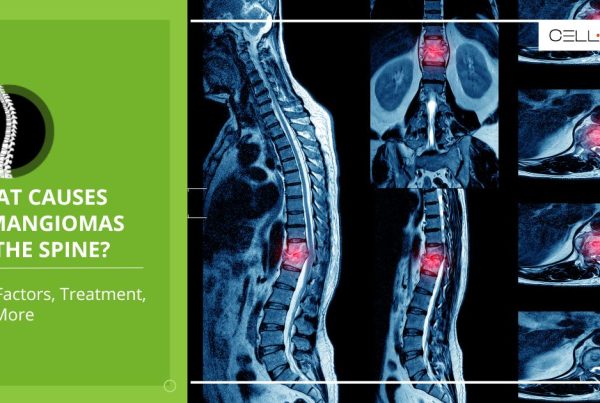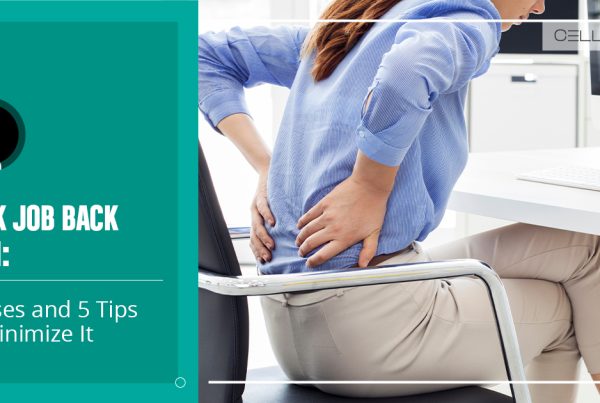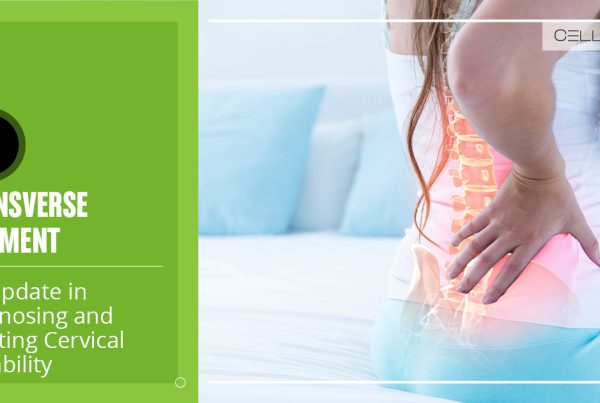Published on: December 23, 2022 | Updated on: August 29, 2024
Spinal fusion is a surgical procedure that restores the movement and stability of the spine. It fuses two or more vertebrae to let them heal as one bone. The surgery is effective in eliminating painful motion in the cervical region (neck), thoracic region (middle back), and lumbar region (lower back).
Although the surgery has an 80 to 90% success rate, some people look for different spinal fusion alternatives to treat their condition. Luckily, many of these alternatives have shown remarkable results, including epidural steroid injections, cervical disc replacement, and endoscopic lumbar discectomy.
The doctor will evaluate your symptoms and choose the suitable spinal fusion alternative for your condition. The eight effective and commonly performed spinal fusion alternatives include the following:
1. Cervical Disc Replacement (CDR)
Cervical disc replacement (CDR) is a usual disc replacement surgery performed in the cervical spine. It involves replacing the damaged disc in the spine with an artificial disc.
CDR is one of the best spinal fusion alternatives, as it relieves nerve compression from the vertebral discs. The artificial disc restores the normal mobility of the spine. On the other hand, spinal fusion surgery prevents motion in the spine.
Opting for CDR will give you three benefits:
- Preserving spinal motion will reduce the chances of other discs getting damaged or torn down prematurely.
- The artificial disc may relieve pain better than spinal fusion.
- CDR is clinically proven to eliminate the risks of further surgery in the neck region.
However, CDR may pose more significant risks, such as the failure of the motion preservation device because of wearing out. Typically, revision CDR surgeries are quite expensive and extremely risky. Thus, your doctor will go for this spinal fusion alternative after evaluating your condition’s pros and cons.
2. Endoscopic Lumbar Discectomy
Also known as endoscopic spine surgery (ESS), the endoscopic lumbar discectomy is a less invasive procedure to relieve pain in the leg and lower back. This surgery inserts an endoscope with an attached HD camera from the lower back into the spine through a ¼-inch incision.
The doctor finds the root cause of spinal pain and removes the herniated disc from your lower back. This relieves pressure from your nerves and the spinal cord.
According to many clinical studies, endoscopic lumbar discectomy offers many advantages, such as less pain, minimal soft tissue damage, and a shorter recovery period. It also has fewer complication risks compared to spinal fusion surgery.
3. Epidural Steroid Injections (ESIs)
Epidural steroid injections (ESIs) are a non-surgical way to reduce the pain in your lower back, middle of the back, and neck. It is effective if there is discomfort or pain due to nerve compression or disc herniation.
If the spinal stenosis has affected your lower back, ESIs can ease pain throughout your leg, reducing inflammation and nerve compression side by side. Similarly, these injections can relieve neck, arms, upper back, and shoulder pain. ESIs also ease swelling in all these areas.
ESIs have a very short recovery period. However, they may not always provide long-term relief to your spinal stenosis pain. Therefore, a thorough examination is needed to determine whether this method suits the patient.
4. Coflex Lumbar Interlaminar Device
For some patients, the Coflex lumbar interlaminar device is the best alternative for spinal stenosis and spinal fusion. Coflex is a single titanium implant or device the doctor inserts in your lumbar region (lower back of the spine) to support and preserve motion. The device also relieves pressure from your arthritic joint structures and nerves.
Coflex surgery is proven to be a faster procedure than spinal fusion. This means patients don’t have to spend weeks in the hospital after the surgery. It also has fewer blood loss complications during the procedure. Compared to spinal fusion, Coflex lumbar surgery also offers speedier recovery.
According to one study, Coflex interlaminar-interspinous implant offers long-term pain relief in most patients. However, the follow-up of the lower back or leg pain starts after 2 to 5 years.
However, many patients have reported continued pain after having the Coflex lumbar implant. Some other risks include numbness or tingling sensations in arms and legs, infections, wound drainage, and spinous process fractures. Therefore, your doctor will only opt for the Coflex lumbar interlaminar device after running a detailed diagnosis of your condition.
5. Posterior Dynamic Stabilization
Posterior dynamic stabilization is a unique spinal fusion alternative to stabilize and mobilize the spine and its motion. It also relieves pressure from the painful vertebral disc to promote healing and minimize pain in the spine.
The doctor uses different state-of-the-art devices to remove pressure from the spine, just like a dynamic brace unloads pressure from the injured ankle or knee. Active stabilization devices are made of rod constructs and pedicle screws usually used in spinal fusion surgery.
These devices only provide stability to the spine and reduce pain until the natural fusion mass appears in the affected vertebrae. Fortunately, many posterior dynamic stabilization devices with advanced features are still in the testing phase.
Like every treatment, posterior dynamic stabilization poses risks, such as implant breakage, dural tear, spinal infection, implant loosening, and adjacent vertebral segment disease. But these happen rarely.
6. Endoscopic Rhizotomy
An endoscopic rhizotomy is a minimally invasive procedure that helps doctors directly visualize the medial neural structures to perform ablation of the nerves responsible for pain in degenerative joint diseases. Endoscopic rhizotomy aims to turn off these nerves so that the patient doesn’t feel the pain. It also maintains your spinal mobility for a long time.
The pain relief through endoscopic rhizotomy lasts for many years. The process is completed within 60 minutes. Usually, the patient stays awake during the procedure, but the doctor may administer a mild sedative for the patient’s comfort in some conditions. You may feel pain during the rhizotomy, but no pain since only a tiny incision is made.
Endoscopic rhizotomy has a high success rate, and the patient may return to everyday life within one or two days. The surgery also has minimal complications and long-term pain relief effects.
7. Intradiscal Electrothermal Annuloplasty (IDET)
Intradiscal electrothermal annuloplasty (IDET) is another minimally invasive spinal fusion alternative. It is effective for degenerative disc disease in the lumbar region of patients who fail conservative treatment or don’t want to go for spinal fusion.
In IDET, the doctor inserts a needle into the patient’s lumbar disc area and passes a catheter through it. Then, they heat the outer region of the disc space (annulus). This thickens the disc’s collagen fibers, which heals painful tears and relieves pain. The doctor also cauterizes the patient’s nerve endings to make them less pain-sensitive.
IDET is an outpatient procedure, meaning you can go home right after the procedure. However, it may not give effective results for every patient. People with mild degenerative disc disease usually respond better to the treatment than those with severe degenerative disc disease.
8. Orthobiologic Methods
With the recent advancement in regenerative medicine, more and more patients opt for orthobiologic methods. These are non-invasive and less painful treatments for many sports and spine-related injuries.
CELLAXYS offers two orthobiologic treatments: cell-based therapies and platelet-rich plasma (PRP) therapy. Both of these methods are outpatient procedures with a short recovery period. Our experienced healthcare professionals will analyze your spine condition, diagnose the symptoms, and opt for any of the two orthobiologic methods.
Cell-based Therapies
You may have already heard about this method as “stem cell therapy.” This process involves harvesting the patient’s own or “autologous” healthy cells from two areas and reinjecting them into the injury site. The goal is to promote healing in the affected area.
Depending on your condition, the doctor may perform any of the two types of cell-based therapies:
- Minimally Manipulated Adipose Tissue Transplant (MMAT). The cells are extracted from your adipose (fat) tissue, processed, and reinjected into the affected spinal area. One great benefit of MMAT is that the doctor can perform it at multiple locations in the same procedure.
- Bone Marrow Concentrate (BMAC). In this method, the doctor extracts highly concentrated bone marrow and injects it into the injured spinal area to promote healing.
Both cell-based therapies take about 1.5 to 2 hours to complete. The doctor uses live X-rays and ultrasounds to identify the exact injury site. You’re likely to go home a few hours after the procedure.
Platelet-Rich Plasma Therapy (PRP)
PRP involves taking the patient’s blood sample and isolating platelets. The platelets are then processed and reinjected into the patient’s injury site, i.e., the spine. Platelets are the healing components of our body that act as the first line of defense.
Platelets perform three main functions. First, they release 10 Growth Factors to promote the development of new tissues. Second, they attract healing components from the blood. Third, they produce a web-like scaffolding called fibrin to boost the growth of new cells and tissues.
A high number of platelets in the injury site means early recovery. PRP is one of the common spinal fusion alternatives that many athletes opt for for their sports injuries. It is usually completed within 45 minutes.
Sources
Footnotes
- Leven D, Meaike J, Radcliff K, Qureshi S. Cervical disc replacement surgery: indications, technique, and technical pearls. Current Reviews in Musculoskeletal Medicine. 2017;10(2):160-169.
- Jhala A, Mistry M. Endoscopic lumbar discectomy: Experience of first 100 cases. Indian Journal of Orthopaedics. 2010 Apr;44(2):184-90.
- Katzell JL. Risk factors predicting less favorable outcomes in endoscopic lumbar discectomies. Journal of Spine Surgery. 2020;6(Suppl 1):S155-S164.
- Hassan KZ, Sherman Al. Epidural Steroids. In: StatPearls [Internet]. Treasure Island (FL): StatPearls Publishing; 2023.
- Davis RJ, Errico TJ, Bae H, Auerbach JD. Decompression and Coflex interlaminar stabilization compared with decompression and instrumented spinal fusion for spinal stenosis and low-grade degenerative spondylolisthesis: two-year results from the prospective, randomized, multicenter, Food and Drug Administration Investigational Device Exemption trial. Spine (Phila Pa 1976). 2013;38(18):1529-39.
- Errico TJ, Kamerlink JR, Quirno M, Samani J, Chomiak RJ. Survivorship of coflex Interlaminar-Interspinous Implant. SAS Journal. 2009;3(2):59-67.
- Erbulut DU, Zafarparandeh I, Ozer AF, Goel VK. Biomechanics of posterior dynamic stabilization systems. Advances in Orthopedics. 2013;2013:451956.
- Heary RF. Intradiscal electrothermal annuloplasty: the IDET procedure. Journal of Spinal Disorders. 2001;14(4):353-60.
References
- Non Fusion Technologies. The George Washington University Hospital: Spine and Pain Center. Accessed 9/12/2023.
- Lumbar Spine Surgery Alternatives. Spine-Health. Accessed 9/12/2023.
- An alternative to spinal fusion for lower back pain. UCI Health. Accessed 9/12/2023.
- Rhizotomy. Johns Hopkins. Accessed 9/12/2023.
CELLAXYS does not offer Stem Cell Therapy as a cure for any medical condition. No statements or treatments presented by Cellaxys have been evaluated or approved by the Food and Drug Administration (FDA). This site contains no medical advice. All statements and opinions are provided for educational and informational purposes only.
Dr Pouya Mohajer
Author
Pouya Mohajer, M.D. is the Director of Spine and Interventional Medicine for CELLAXYS: Age, Regenerative, and Interventional Medicine Centers. He has over 20 years of experience in pain management, perioperative medicine, and anesthesiology. Dr. Mohajer founded and is the Medical Director of Southern Nevada Pain Specialists and PRIMMED Clinics. He has dedicated his career to surgical innovation and scientific advancement. More about the doctor on this page.
Dr Pejman Bady
Contributor
Dr. Pejman Bady began his career over 20 years ago in Family/Emergency Medicine, working in fast-paced emergency departments in Nevada and Kansas. He has served the people of Las Vegas as a physician for over two decades. Throughout this time, he has been met with much acclaim and is now the head of Emergency Medical Services in Nye County, Nevada. More about the doctor on this page.









